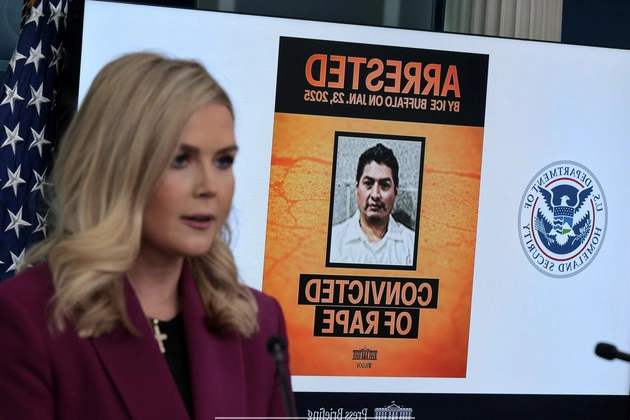
Unveiling the Immigration PR Campaign
President Donald Trump’s mass deportation plan he promised during the campaign has not yet taken hold — but you wouldn’t know that from the White House PR campaign. The administration has blitzed the airwaves and social media feeds with announcements of enforcement actions by Immigration and Customs Enforcement.
White House social media accounts post photos of shackled migrants being loaded onto military aircraft. Raids have been unusually public — with even “Dr. Phil” allowed to film an operation in Chicago.
The Reality Check
Despite the media frenzy, daily Immigration and Customs Enforcement arrests are still comparable to those under President Barack Obama. Many detainees have no violent criminal history, and thousands have been quietly released due to detention capacity constraints.
Contrary to the grand promises, the deportation program falls short of being the largest in American history. Former ICE director John Sandweg points out the inaccuracies in the portrayal of ICE’s actions.
Challenges of Mass Deportations
The high-profile media coverage underscores the hurdles faced by the Trump administration in fulfilling the mass deportations pledge. It’s an ambitious endeavor requiring substantial funding, time, and resources to scale up. The political implications of targeting non-violent offenders add further complexity.
Debunking the PR Narrative
While the White House defends the actions as substantive, critics argue that they mask the operational realities. The emphasis on tariff deals, the national emergency declaration, and other policy shifts aims to reshape the immigration landscape but raises questions about the true impact on deportation numbers.
Political Messaging or Policy Shift?
Deportation numbers surged in 2024, but reports reveal a significant portion of those arrested have been released back into communities. The portrayal of routine ICE operations as part of a mass deportation strategy blurs the line between political messaging and operational realities.
Trump’s PR campaign serves multiple purposes, signaling to different audiences while amplifying the administration’s enforcement efforts. The narrative targets his base, immigration stakeholders, and the broader public with varying degrees of success.
Policy Implications and Public Perception
The strategic use of images, data points, and messaging tools aims to influence public opinion and shape the policy discourse. Trump’s fundraising efforts tied to immigration underscore the intersection of politics and policy in the deportation narrative.
As the administration expands its definition of criminality and deportation criteria, the broader implications on families, communities, and labor force dynamics come into focus. The complex interplay between enforcement actions, public sentiment, and policy outcomes underscores the multifaceted nature of immigration debates.
Looking Ahead
As the immigration landscape evolves, the challenges of enforcing mass deportations while navigating legal, logistical, and political constraints remain daunting. The enduring legacy of Trump’s deportation efforts will be shaped by the balance between rhetoric, reality, and the broader implications for immigration policy in the United States.















